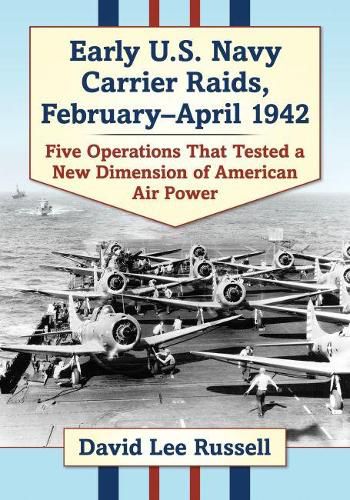Readings Newsletter
Become a Readings Member to make your shopping experience even easier.
Sign in or sign up for free!
You’re not far away from qualifying for FREE standard shipping within Australia
You’ve qualified for FREE standard shipping within Australia
The cart is loading…






This title is printed to order. This book may have been self-published. If so, we cannot guarantee the quality of the content. In the main most books will have gone through the editing process however some may not. We therefore suggest that you be aware of this before ordering this book. If in doubt check either the author or publisher’s details as we are unable to accept any returns unless they are faulty. Please contact us if you have any questions.
After the Japanese attack on Pearl Harbor, America’s fast carrier task forces, with their aircraft squadrons and powerful support warships, went on the offensive. Under orders from the Fleet Admiral Ernest J. King, the newly appointed Admiral Chester W. Nimitz, as the Commander-in-Chief of the Pacific Fleet, took the fight to the Japanese, using island raids to slow their advance in the Pacific. Beginning in February 1942, a series of task force raids led by the carriers USS Enterprise, USS Yorktown, USS Lexington and USS Hornet were launched, beginning in the Marshall Islands and Gilbert Islands. An attempted raid on Rabaul was followed by successful attacks on Wake Island and Marcus Island. The Lae-Salamaua Raid countered Japanese invasions on New Guinea. The most dramatic was the unorthodox Tokyo (Doolittle) Raid, where 16 carrier-launched B-25 medium bombers demonstrated that the Japanese mainland was open to U.S. air attacks. The raids had a limited effect on halting the Japanese advance but kept the enemy away from Hawaii, the U.S. West coast and the Panama Canal, and kept open lines of communications to Australia.
$9.00 standard shipping within Australia
FREE standard shipping within Australia for orders over $100.00
Express & International shipping calculated at checkout
This title is printed to order. This book may have been self-published. If so, we cannot guarantee the quality of the content. In the main most books will have gone through the editing process however some may not. We therefore suggest that you be aware of this before ordering this book. If in doubt check either the author or publisher’s details as we are unable to accept any returns unless they are faulty. Please contact us if you have any questions.
After the Japanese attack on Pearl Harbor, America’s fast carrier task forces, with their aircraft squadrons and powerful support warships, went on the offensive. Under orders from the Fleet Admiral Ernest J. King, the newly appointed Admiral Chester W. Nimitz, as the Commander-in-Chief of the Pacific Fleet, took the fight to the Japanese, using island raids to slow their advance in the Pacific. Beginning in February 1942, a series of task force raids led by the carriers USS Enterprise, USS Yorktown, USS Lexington and USS Hornet were launched, beginning in the Marshall Islands and Gilbert Islands. An attempted raid on Rabaul was followed by successful attacks on Wake Island and Marcus Island. The Lae-Salamaua Raid countered Japanese invasions on New Guinea. The most dramatic was the unorthodox Tokyo (Doolittle) Raid, where 16 carrier-launched B-25 medium bombers demonstrated that the Japanese mainland was open to U.S. air attacks. The raids had a limited effect on halting the Japanese advance but kept the enemy away from Hawaii, the U.S. West coast and the Panama Canal, and kept open lines of communications to Australia.